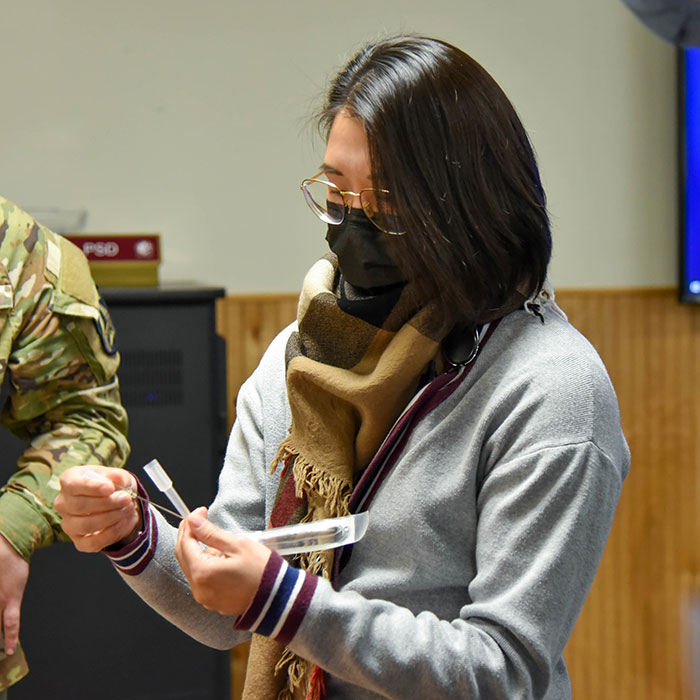USAMRDC Combat Medics Provide Feedback and Insight to Product Developers

On November 8, Sgt. 1st Class Daniel McGarrah of the U.S. Army Medical Research and Development Command's U.S. Army Medical Materiel Development Activity hosted a class designed to give the command workforce an inside look at how research and acquisition efforts impact battlefield care.
As part of the class, participants watched videos containing real-life scenes of battlefield trauma involving Service Members in order to gain perspective on providing care at the point of injury.
"As a Special Operations Combat Medic, I have a unique background to explain the issues occurring during casualty treatment and evacuation," said McGarrah. "By combining my understanding of combat experience, I can merge the two into a class that showcases the gaps in our current processes and offers solutions. Merging the research mentality with an operational focus can help the acquisition personnel in USAMRDC better understand what the end user needs."
At the end of the lecture, attendees participated in a series of hands-on practice trauma treatments led by McGarrah and training instructor, Spc. Neal Burnett, from the U.S. Army Medical Research Institute of Infectious Diseases. Burnett stated that McGarrah's goal in hosting the class was to share feedback with those taking part in developing the products that combat medics use on the battlefield.
"We are always seeking out new ways to better assist and support healthcare providers, especially the medics on the front line," said Holly Ortman, a critical care research nurse at USAMRDC's Telemedicine and Advanced Technology Research Center, when explaining why she decided to participate in the class. "Point of injury care is essential to improving a casualty's chance of survival. Understanding the environmental constraints and challenges medics must operate in is imperative to know."
McGarrah noted that he hopes attendees gain at least two new perspectives out of taking this class.
"First, I hope the folks who attend this class gain a bit of empathy for what Soldiers are required to do to stay alive. Understanding that can help MRDC personnel ensure they provide the best products to the Warfighter," he said. "Second, I want them to understand what has happened within medical acquisition over the past few decades, both good and bad. This understanding of the past will help get better products to the next generation of Soldiers."
"This opportunity is particularly helpful to the Medical Modeling, Simulation, Informatics, Visualization division as we work to develop accurate scenario representations during testing," said Ortman when detailing how the class would further benefit her work. "This class also reiterated the importance of including the end-user' perspectives and feedback when evaluating emerging technologies."
For more information on the next Point of Injury Overview session, contact Sgt. 1st Class McGarrah.














